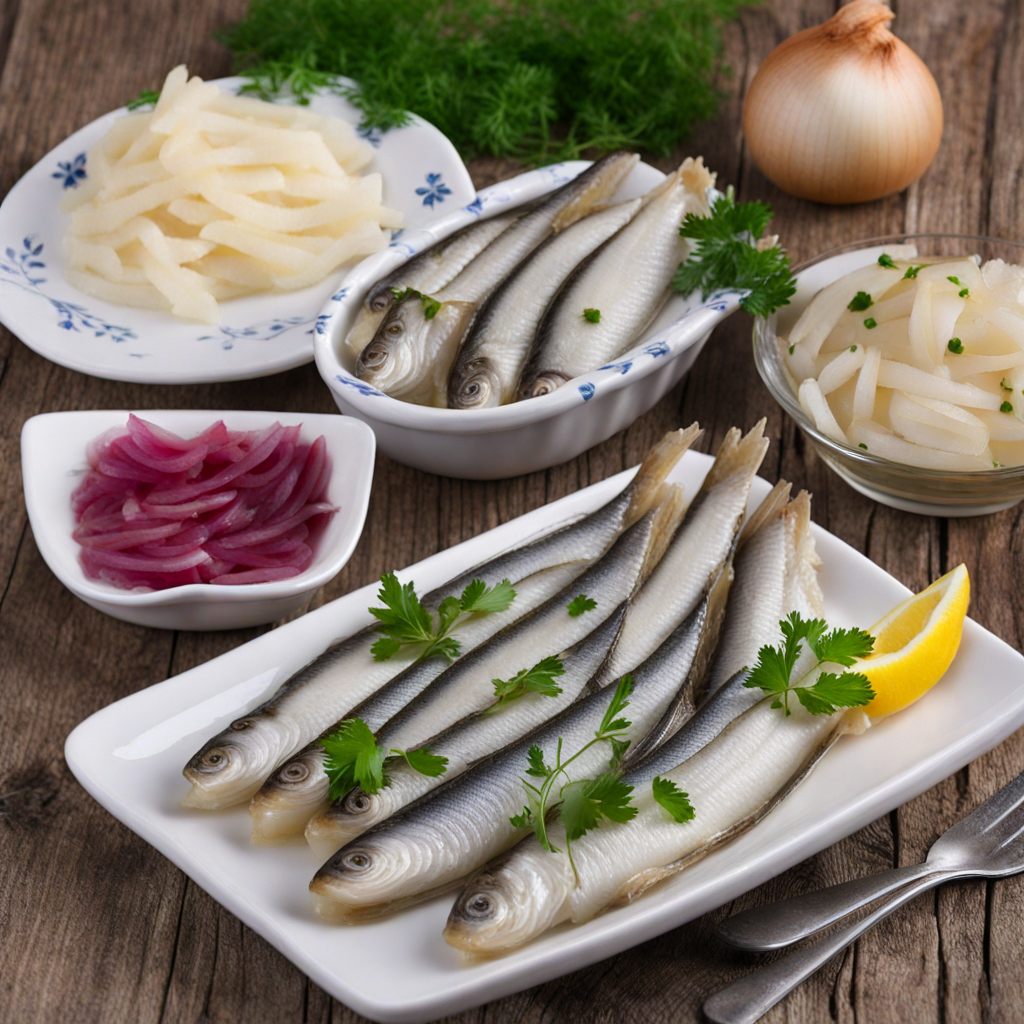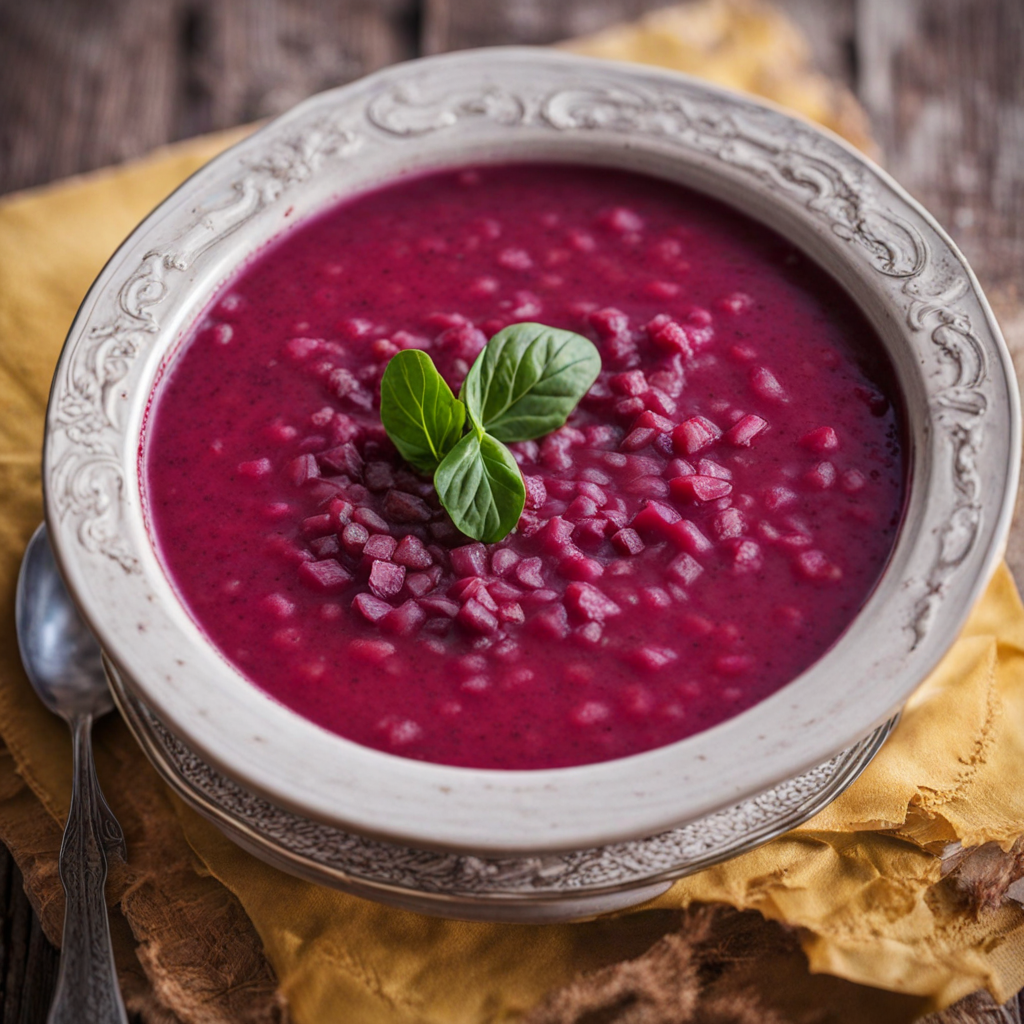Sorrel Soup
Sorrel Soup, or 'Špinatų sriuba' in Lithuanian, is a delightful and tangy dish that showcases the vibrant flavors of fresh sorrel leaves. This soup is often prepared with a base of sautéed onions and potatoes, which create a comforting and hearty foundation. The star of the dish, sorrel, adds a unique sourness that brightens the entire bowl, making it a refreshing choice, especially during the spring and early summer months when the leaves are at their peak freshness. The lush green color of the soup is visually appealing, inviting one to savor its delightful taste.
How It Became This Dish
Rūgštynių Sriuba: A Culinary Journey Through Lithuania’s Rich Heritage Rūgštynių sriuba, or sorrel soup, is a beloved traditional dish in Lithuania that encapsulates the country’s deep relationship with its land, seasons, and culinary heritage. This tangy green soup, made primarily from sorrel leaves, is not just a meal but a reflection of Lithuania’s agricultural practices, seasonal eating, and cultural identity. #### Origins: The Roots of Rūgštynių Sriuba The origins of rūgštynių sriuba can be traced back to the agrarian lifestyle of the Lithuanian people. Sorrel, a leafy green herb that thrives in cooler climates, has been used in European cooking since ancient times. It is one of the first greens to appear in spring, making it a popular choice for early-season dishes. In Lithuania, sorrel's tart flavor was appreciated for its refreshing qualities after a long winter, and it became a staple for rural households. Historically, Lithuanian cuisine was heavily influenced by the availability of local ingredients. The country’s fertile soil and favorable climate allowed for a variety of crops to flourish, including root vegetables, grains, and leafy greens. Sorrel, known for its high vitamin C content, was particularly favored as it provided much-needed nutrients after the scarcity of winter months. #### Cultural Significance: A Symbol of Spring and Abundance Rūgštynių sriuba is more than just a dish; it is emblematic of the Lithuanian spirit and the celebration of seasonal change. Traditionally served in the spring, this soup marks the end of winter and the arrival of new life. Families would often gather around the table to enjoy this vibrant green soup, symbolizing hope, renewal, and abundance. In Lithuanian folklore, food plays a crucial role in various rituals and celebrations. Rūgštynių sriuba, like many other dishes, is often associated with seasonal festivals and communal gatherings. It is not uncommon for communities to come together during springtime to harvest sorrel and prepare large pots of soup, reinforcing social bonds and shared cultural practices. This tradition highlights the importance of community and the collective appreciation for the bounty of nature. #### Development Over Time: From Rustic Beginnings to Modern Interpretations As with many traditional dishes, rūgštynių sriuba has evolved over the centuries. Initially, the soup was quite simple, made with just sorrel, water, and a few basic seasonings. However, as culinary practices developed, so did the complexity of the recipe. The introduction of additional ingredients such as potatoes, carrots, and sometimes even eggs or cream transformed the soup into a heartier meal. During the 19th and early 20th centuries, Lithuania experienced significant social and political changes that influenced its culinary landscape. The rise of urbanization and industrialization led to a shift in dietary habits, with many people moving away from rural traditions. However, while many traditional recipes were at risk of being lost, others, including rūgštynių sriuba, remained resilient. They adapted to urban life, evolving into a dish that could be prepared quickly yet still retained its essential flavors and cultural significance. The post-Soviet era saw a resurgence of interest in traditional Lithuanian cuisine as the country sought to reclaim and celebrate its national identity. Rūgštynių sriuba, along with other traditional dishes, began to be featured prominently in restaurants and culinary festivals, showcasing Lithuania’s rich gastronomic heritage. Chefs and home cooks alike began experimenting with contemporary twists on the classic recipe, incorporating modern techniques while honoring its rustic roots. #### Modern-Day Rūgštynių Sriuba: A Contemporary Classic Today, rūgštynių sriuba is enjoyed by both Lithuanians and visitors to the country. It is often found on menus in cafes and restaurants, served as a comforting starter or a light main dish. Chefs have embraced the natural tang of sorrel, pairing it with various ingredients to create unique interpretations of the classic soup. Some modern versions might include elements such as smoked fish, fresh herbs, or even a drizzle of high-quality olive oil, showcasing a fusion of traditional Lithuanian and contemporary culinary practices. In addition to its delightful taste, rūgštynių sriuba is celebrated for its health benefits. Sorrel is rich in antioxidants, vitamins, and minerals, making it not only a delicious choice but also a nutritious one. This aspect has been particularly appealing in the modern era, where there is a growing awareness of healthy eating and the benefits of seasonal, locally-sourced ingredients. The soup has also found its way into the hearts of those outside Lithuania, thanks to the globalization of food culture. Lithuanian communities around the world continue to share their culinary heritage, introducing friends and family to the joys of rūgštynių sriuba. Cookbooks and online recipes have made it easier for enthusiasts to recreate this traditional dish, further solidifying its place in the global culinary landscape. #### Conclusion: A Taste of Lithuania’s Heritage Rūgštynių sriuba is more than just a bowl of soup; it is a testament to Lithuania’s agricultural roots, cultural traditions, and the resilience of its culinary heritage. As it has evolved from rustic beginnings to modern interpretations, this soup remains a cherished dish that connects generations. It embodies the essence of Lithuanian identity—celebrating the changing seasons, honoring the land, and bringing people together around the table. Whether enjoyed in a cozy home or a bustling restaurant, rūgštynių sriuba continues to warm hearts and nourish the soul, ensuring its place in the tapestry of Lithuanian cuisine for years to come.
You may like
Discover local flavors from Lithuania







